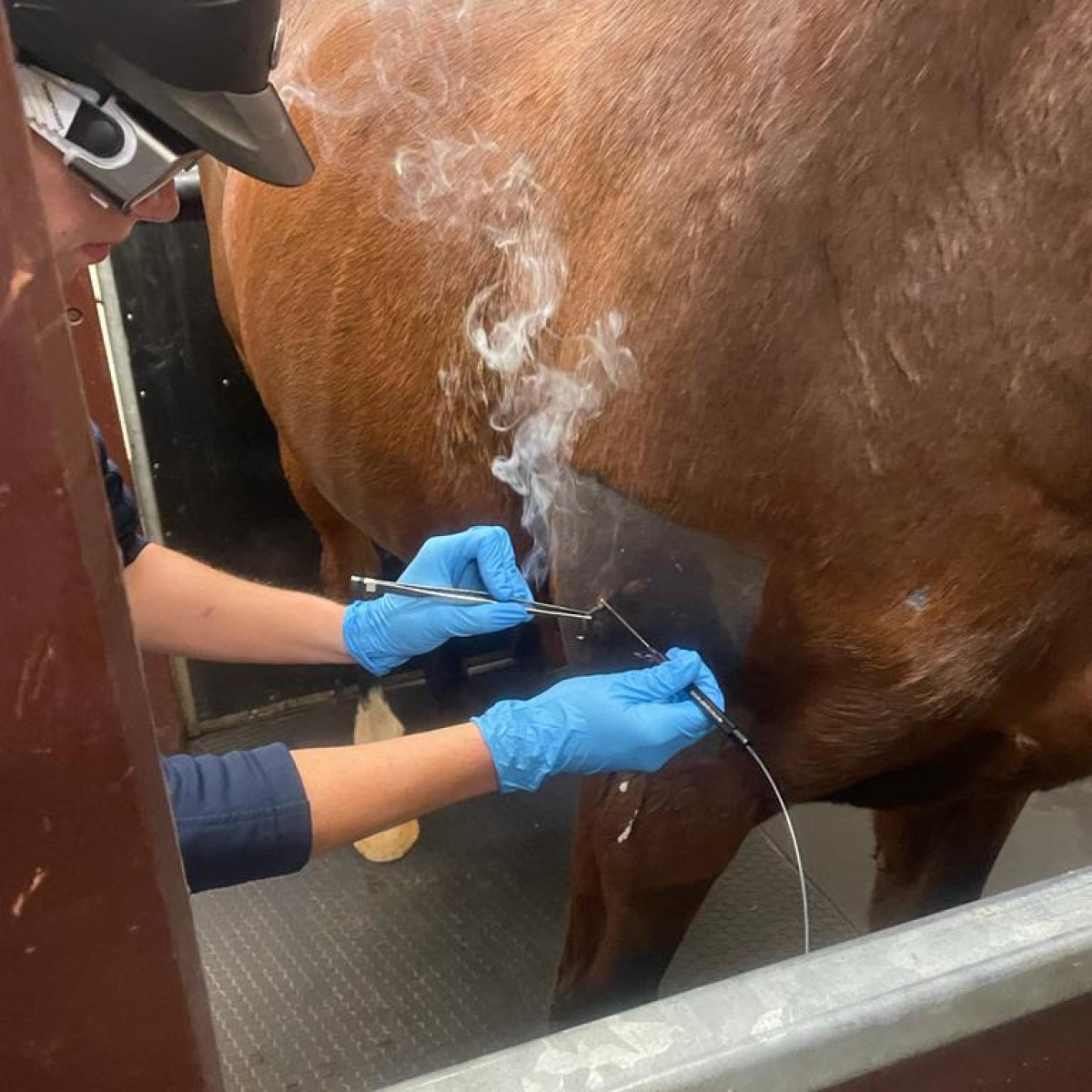Equine Therapy Success Stories: Actual People, Actual Emotional Transformations
Equine Therapy Success Stories: Actual People, Actual Emotional Transformations
Blog Article
Exactly How Laser Therapy in Equine Therapy Is Changing Vet Take Care Of Horses
Laser treatment has arised as a transformative method in equine vet treatment, offering a non-invasive option that expedites recovery and boosts general wellness. The portability and adaptability of laser treatment devices additionally underscore their growing necessity amongst veterinarians.
Comprehending Laser Therapy

The technology behind laser treatment is grounded in the principle of photochemistry, where photons are taken in by chromophores within cells, causing raised ATP manufacturing and inflection of responsive oxygen varieties (Equine Therapy). This, consequently, promotes cellular proliferation, decreases swelling, and accelerates healing. Vet experts utilize different sorts of lasers, including low-level lasers (LLLT) and high-power Course IV lasers, relying on the particular therapeutic objectives and the nature of the equine condition being dealt with
Various laser wavelengths and power setups are meticulously picked to target numerous cells midsts and attain desired medical outcomes. Security protocols are vital, as inappropriate usage can lead to thermal damage or suboptimal healing effects. Thus, a detailed understanding of laser treatment's systems and applications is crucial for its effective execution in equine veterinary technique.
Benefits for Equine Health And Wellness
The myriad benefits of laser therapy for equine wellness include enhanced recovery, pain decrease, and boosted flexibility. This advanced treatment modality leverages details wavelengths of light to penetrate tissues, stimulating mobile feature and promoting quick tissue repair work. The non-invasive nature of laser treatment guarantees minimal stress and anxiety and discomfort for the horse, promoting a smoother recuperation procedure.
Improved healing is one of the leading advantages, as laser therapy accelerates cellular regeneration and collagen synthesis. Pain decrease is accomplished through the anti-inflammatory results of laser therapy, which decreases swelling and minimizes the manufacturing of pain-inducing chemicals.
By lowering swelling and pain, and boosting tissue fixing, laser therapy assists in bring back joint feature and muscle mass versatility. Therefore, laser therapy stands as a transformative device in contemporary horse vet care.
Usual Conditions Treated
Laser treatment has become a functional therapy alternative for a selection of usual equine problems. Among these, musculoskeletal injuries are especially amenable to laser therapy. Equine Therapy. Soft cells injuries, such as tendonitis and tendon strains, take advantage of the anti-inflammatory and analgesic effects of laser therapies, which speed up healing and minimize pain. In addition, laser treatment works for problems like osteoarthritis, where it assists alleviate joint swelling and advertise cells fixing.
Wound management is another area where laser therapy has actually revealed considerable guarantee. Chronic my blog injuries or slow-healing abscess can be particularly tough in horses, but laser treatment boosts cellular regeneration and boosts blood circulation, hence expediting the healing process. Moreover, laser treatments have been successfully employed in handling hoof conditions such as laminitis and abscesses, minimizing discomfort and advertising faster recovery.

Technology Behind Laser Treatment
Beyond the myriad conditions treatable with laser therapy, the modern technology itself merits closer assessment. At the heart of laser treatment is making use of specific wavelengths of light to permeate cells and evoke organic reactions. These wavelengths, typically varying from 600 to 1000 nanometers, are precisely taken in by chromophores in the skin, muscular tissue, and various other cells, prompting a cascade of cellular events.
Laser gadgets made use of in vet medicine usually make use of low-level laser therapy (LLLT) or cold laser therapy. Unlike high-powered surgical lasers, these devices run at reduced energy degrees, enhancing restorative benefits while reducing thermal damage. The power from the laser light boosts adenosine triphosphate (ATP) manufacturing, enhances mobile metabolic rate, and speeds up tissue repair work processes.

Success Stories and Instance Researches

Showcasing the tangible benefits of laser treatment, various success tales and study illuminate its transformative effect on equine health. One such situation involves a find more pureblood racehorse suffering from persistent tendonitis. Conventional therapies yielded minimal improvement, however after integrating laser therapy right into the routine, the horse showed substantial reductions in inflammation and pain within weeks, eventually going back to competitive racing.
One more compelling instance includes a dressage equine identified with serious back discomfort, limiting its efficiency. A veterinary group employed low-level laser treatment (LLLT) to target the irritated locations, resulting in significant renovation in adaptability and a notable decline in discomfort. Over numerous sessions, the equine regained its peak form, showcasing the efficiency of laser therapy in addressing bone and joint problems.
In addition, a research conducted at a leading equine facility analyzed 50 steeds with numerous soft tissue injuries treated with laser therapy. The results stood out: 85% of the horses showed increased healing times and boosted flexibility. These situations highlight the versatility and effectiveness of laser therapy in equine medication, supplying a non-invasive, scientifically-backed method to boosting healing and performance in horses.
Conclusion
Laser therapy is changing equine veterinary care by providing a non-invasive treatment that speeds up healing, minimizes inflammation, and eases pain. With its efficiency in treating a variety of problems, from bone and joint injuries to chronic conditions like osteoarthritis, this modern technology substantially improves equine wellness and mobility. The transportability and versatility of laser treatment further emphasize its transformative effect on vet practices, strengthening its role as an essential device in modern-day equine healthcare.
Report this page